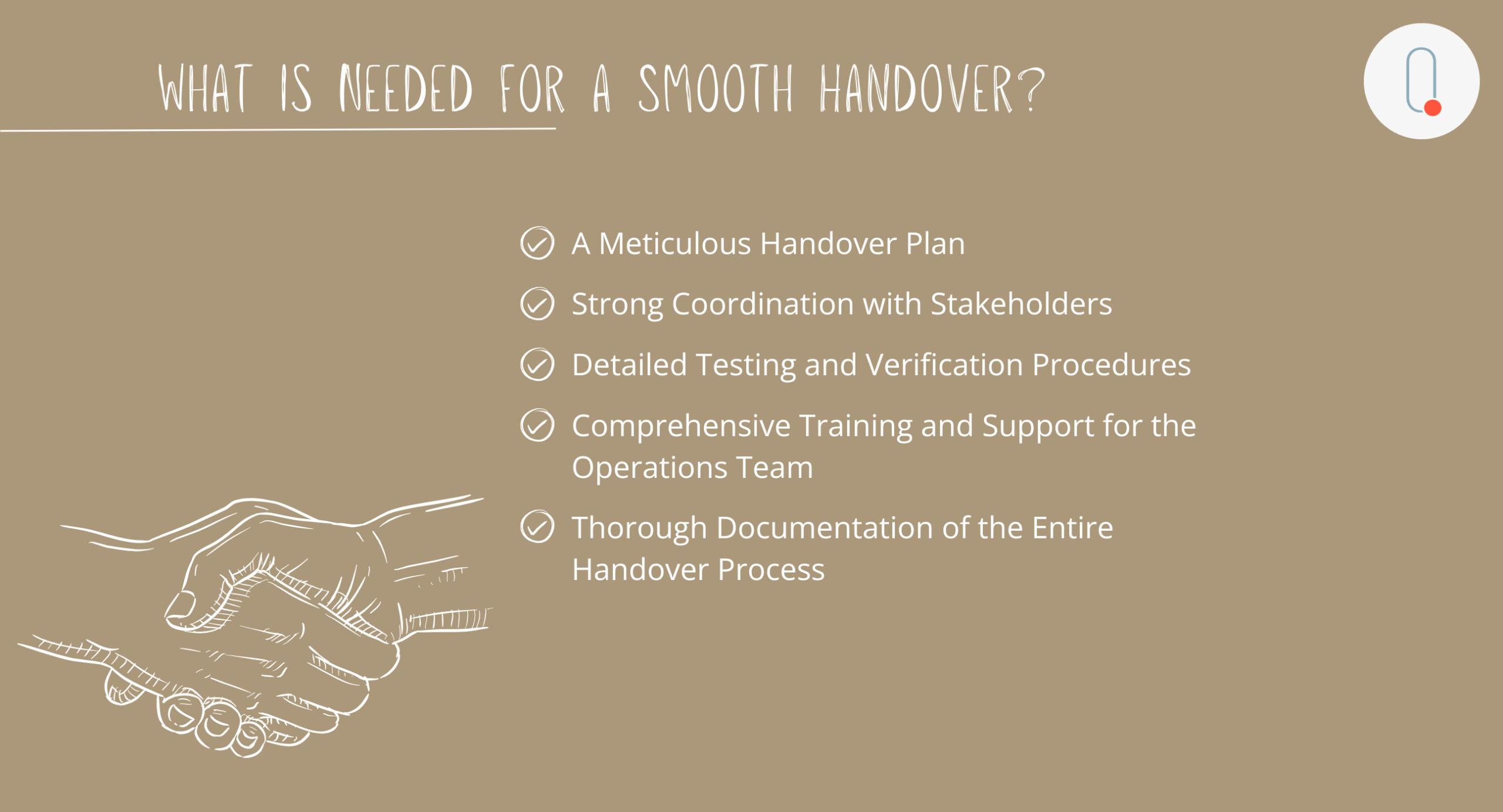Even though often considered to be an afterthought, the handover process is an important phase that ensures a project is completed successfully and meets all requirements. This process involves the formal transfer of a project from the contractor to the client or end-user, marking the transition from project completion to operational use. Understanding the various elements of the handover process and alongside the roles each party plays, helps ensure a smooth and effective transfer of ownership – whilst adhering to the necessary contractual conditions.
The Importance of the Handover Process in a Construction Project
The handover process is crucial for ensuring that a project is ready for operational use and that full installation is documented and able to be referred to – potentially for decades to come. The process involves verifying that all systems and components function as intended, delivering all necessary documentation, providing training and support to the end-users, tracking defect close outs and discharging contractual warranty at the correct times. A well-executed handover process minimises risks, enhances safety and leads to greater client satisfaction as it prepares the building for day-to-day operation.
Key Activities in the Handover Process

Project handover involves multiple processes leading up to practical completion, the completion itself and even years after. Here’s how those activities can be grouped into a few main categories:
Delivering Documentation
This includes operation manuals, warranties, as-built drawings and commissioning records. Providing comprehensive documentation ensures that the client has all the information needed to operate and maintain the systems effectively.
Final Inspections
Final inspections are conducted to ensure that all project deliverables meet the specified standards and requirements. This step is crucial for identifying and addressing any outstanding issues or deficiencies, such as incomplete finishes, malfunctioning equipment, non-compliance with safety codes, or discrepancies between the built environment and the approved design plans. Any issues found during this phase must be documented and resolved before the project can proceed to acceptance.
Training and Support
Providing training to the client's operations team to ensure they are equipped to operate and maintain the systems. Ongoing support may also be necessary to address any issues that arise during the initial operational phase.
Acceptance and Sign-Off
Once all the steps are finalized, formal acceptance from the client is issued, indicating that the project has been completed to their satisfaction. This step marks the official transfer of ownership and responsibility.
Closing Contractual Obligations
The contractor’s responsibilities last long after the keys have been handed to the client team. A careful note should be taken to how these are administered to make sure warranties remain in place.
How to Guarantee a Smooth Handover?
A smooth handover process is essential for ensuring that the project is ready for operational use and that the client is satisfied with the final deliverables. To achieve this, there are a few steps for project teams to follow:

Benefits of a Well-Executed Handover
A well-executed handover process offers a range of benefits to everyone involved in the project. Firstly, it ensures improved quality by making certain that all systems and components meet the specified requirements and standards, which results in a higher quality project. This thorough verification process helps to prevent or minimize the impact of future issues and ensures that the project performs as expected from the outset.
Project handover helps mitigate risk by identifying and resolving issues early, before they escalate into serious operational failures. By addressing problems at the outset, the team can implement effective solutions that avoid costly delays and repairs later.
In addition, a properly structured handover process enhances reliability by ensuring that systems are optimized for performance, leading to improved efficiency and effectiveness. This optimization not only boosts the project’s operational capabilities but also contributes to long-term sustainability and cost savings.
”A thorough handover process empowers clients to take full ownership of their investment, equipped with the knowledge and resources necessary for successful operation.
Finally, it provides client satisfaction by delivering a fully functional and operational project that meets the client’s requirements and expectations. A satisfied client is a part of the success story and a reason to be proud of the project. But happy clients are also more likely to trust the project team with future projects and recommend their services to others, fostering strong professional relationships and business growth.
Handover is just as important as other project phases
The handover process is a critical phase in project control that ensures the successful completion and operational readiness of a project. By following a structured and comprehensive handover process, project teams can ensure a smooth transition from construction to operation. It can become a great factor in determining the scale of a project’s success and long-term operational efficiency.
In the world of project management, particularly in sectors like pharmaceuticals, Data Centres and commercial construction, the handover process is considered just as important as tendering and building phases: an integral part of the process rather than a checklist to tick off. A thorough handover process empowers clients to take full ownership of their investment, equipped with the knowledge and resources necessary for successful operation.
By investing time in planning in a smooth handover, we as Project Controllers, can enhance client confidence, reduce potential issues and lay the groundwork for sustainable operations. Ultimately, prioritising the handover process contributes to stronger partnerships and positions clients for future success.


